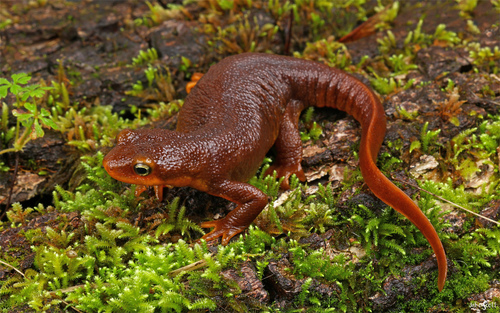
California Newt
The California newt, with its vivid orange underbelly and earthy skin, graces California's moist woodlands. Renowned for its toxic skin, it ingeniously wards off predators. Seasonally migratory, it travels miles to breed in water, showcasing nature's intricate lifecycle and survival adaptations.
20 years
Lifespan
Near Threatened
Conservation Status
Decreasing
Population Trend
Distribution Range of the California Newt
Taricha torosa, commonly known as the California Newt, is native to the United States, specifically in the coastal ranges of California. Its geographical distribution extends from Mendocino County in the north to San Diego County in the south, largely along the Pacific coast and adjacent inland areas.
California Newt's Habitat
Environmental Conditions
The California Newt inhabits moist environments where water is readily available. Typical habitats include oak woodlands, redwood forests, and grasslands, with a preference for areas near streams, ponds, and other water bodies necessary for breeding. The climate within these regions is generally Mediterranean, characterized by wet winters and dry summers.
Ecological Niche
Taricha torosa plays a role in controlling insect populations and serves as both predator and prey within its ecosystem. During the breeding season, they are often found in aquatic environments, whereas, in the non-breeding season, they are typically found under logs, rocks, or in leaf litter in terrestrial environments that provide moisture and cover. The species is known for its potent tetrodotoxin, which provides it with a defense against many potential predators.
Copyright @ Nature Style Limited. All Rights Reserved.
 English
English